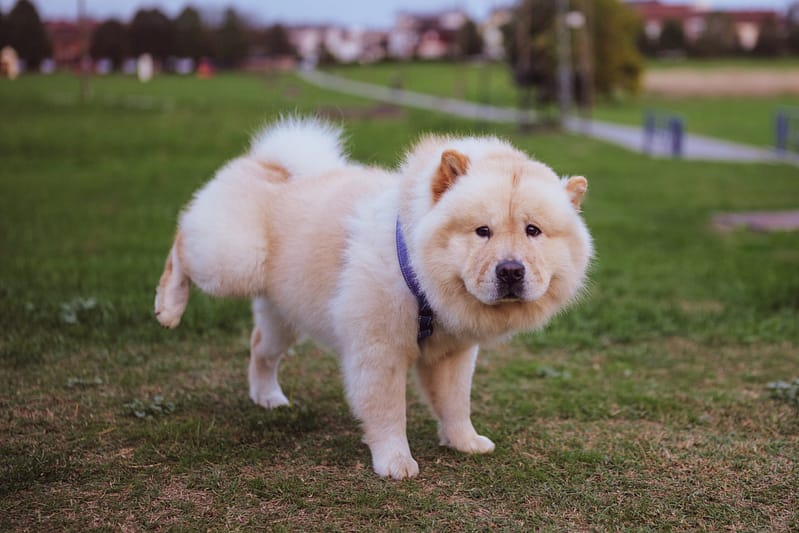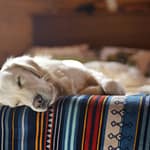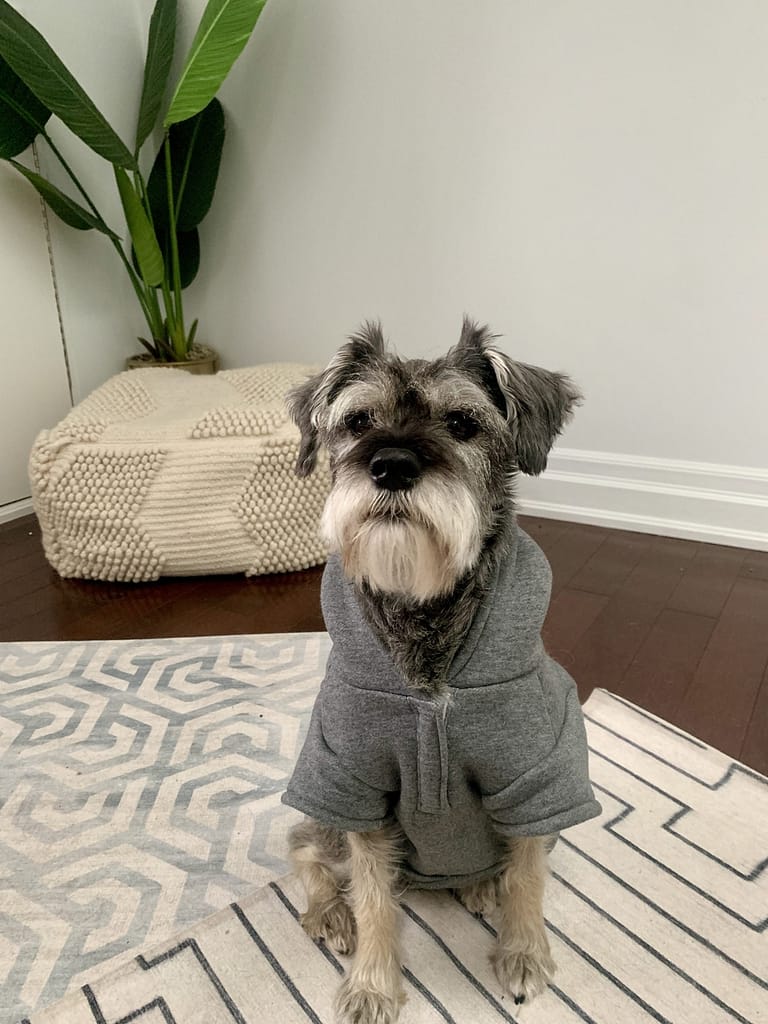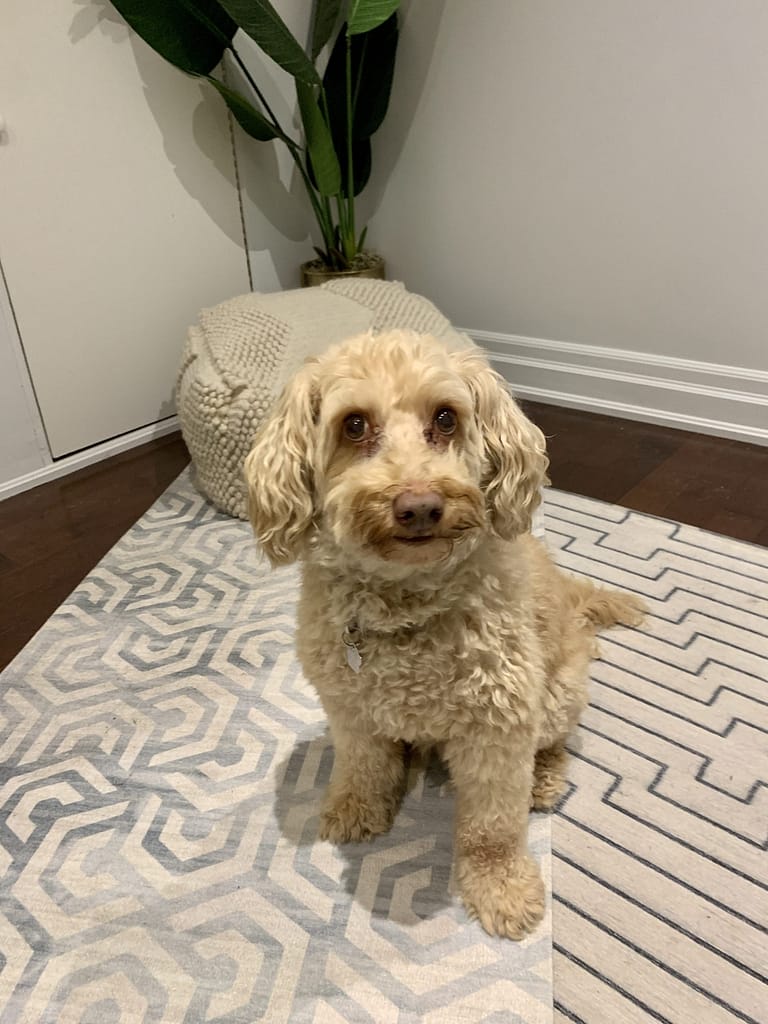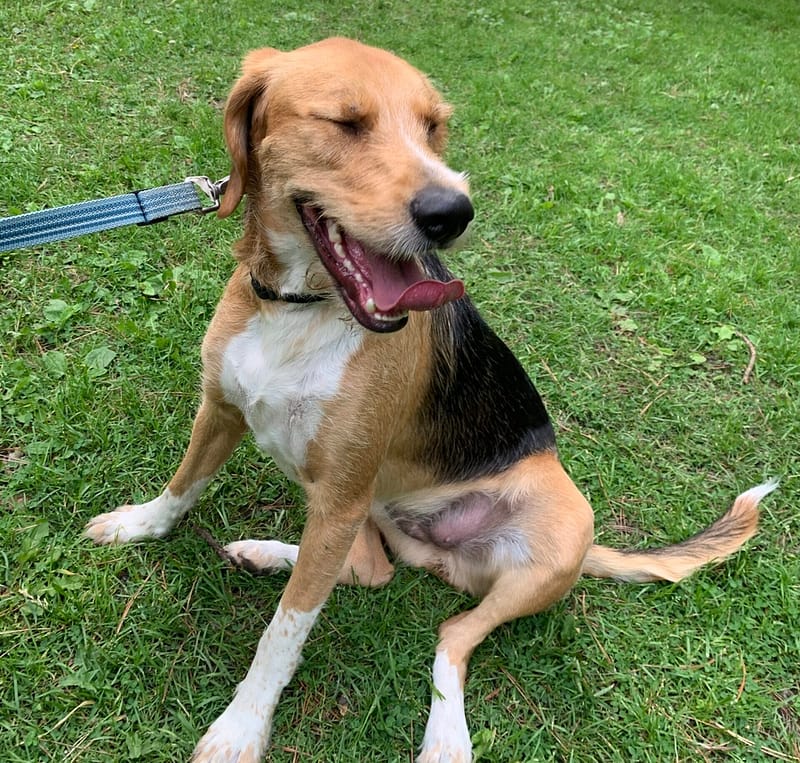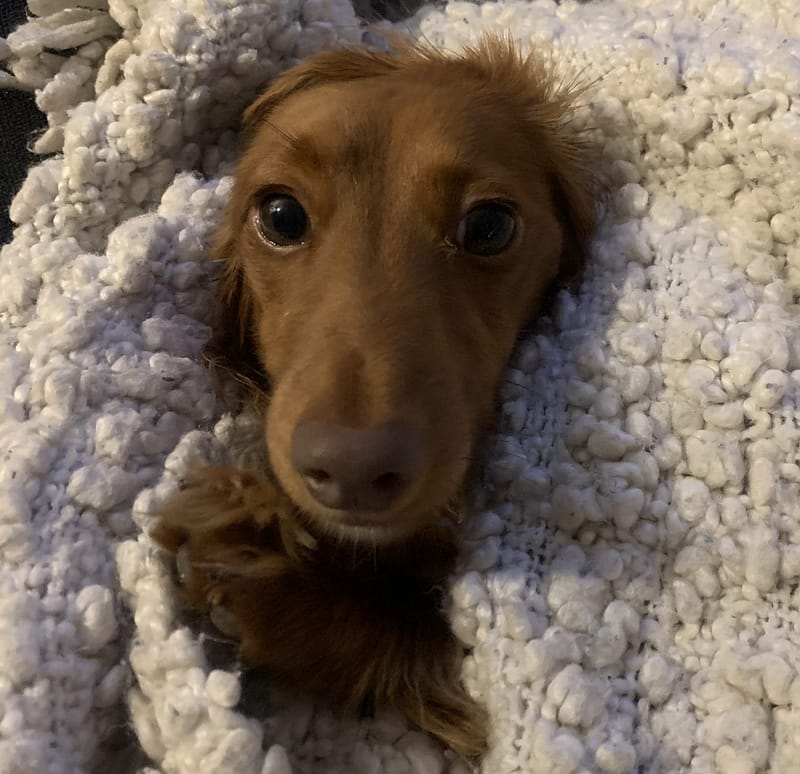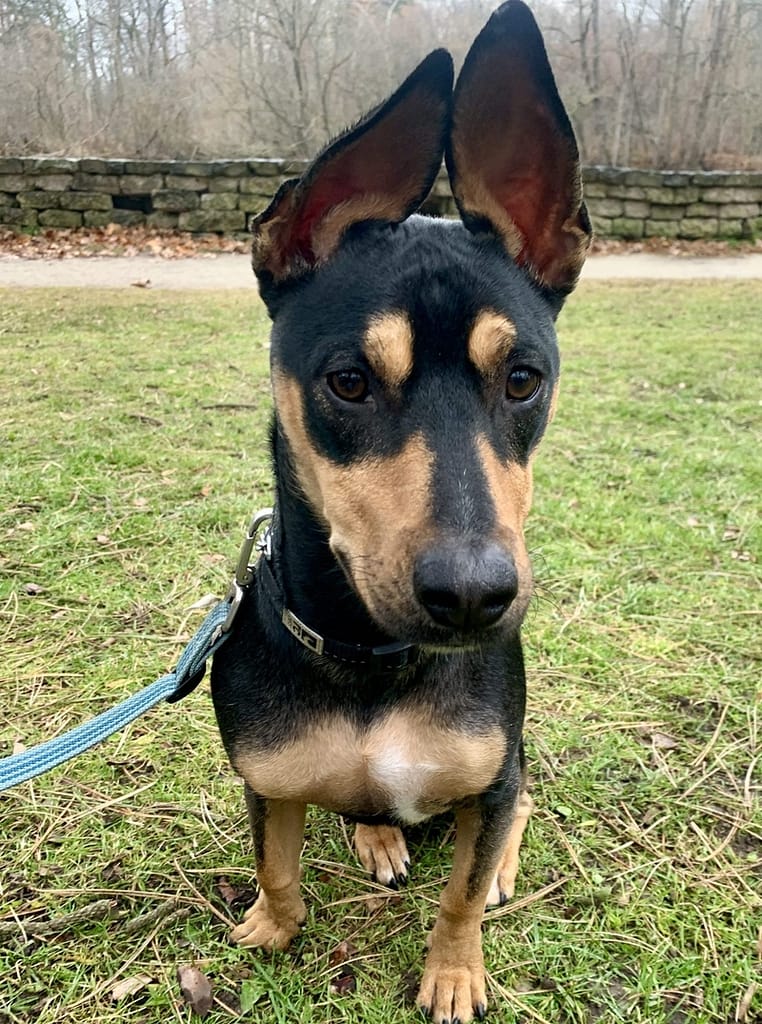You know you are potty training your puppy when you are cleaning parts of your house you never knew existed! Potty training is the first and foremost thing to be taught to a newly welcomed puppy. It sets the foundation to easy house breaking, routine setting as well as boundary setting. Read on for some tips to effectively potty train your pup.
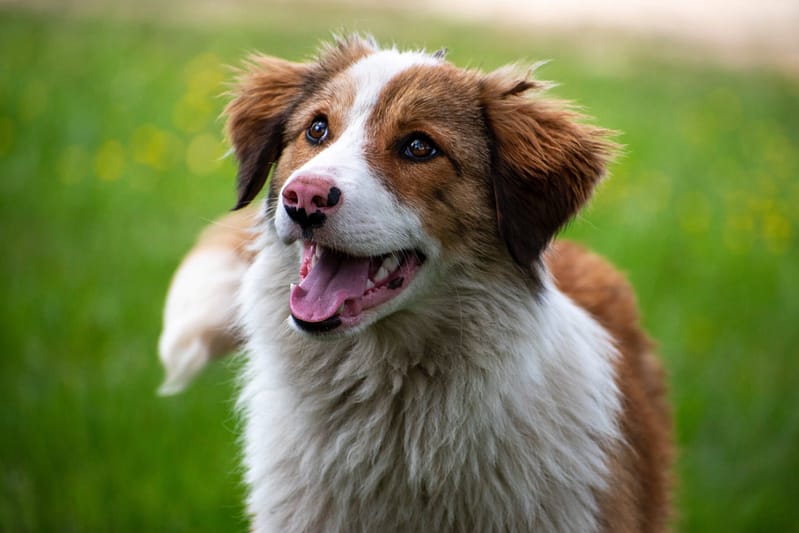
How long does it really take to potty train a puppy?
Generally speaking, if you start potty training your puppy the day you welcome them home, it could take anywhere between 1-3 months to thoroughly potty train the pup. However, there may be multiple other factors that may either delay or accelerate this process, such as:
- Your puppy’s age
- Previously learned behaviors by the puppy, if any
- Patience and consistency showed by the pet parents
- The surface and location preference of the puppy. Eg, If the dog prefers peeing outdoors on grass, getting them to pee indoors on a pee pad may be challenging
- The breed of the dog. Breeds like Dachshunds and Yorkies are known to be resilient when it comes to potty training
- The puppy’s temperament. A nervous or anxious pup may have relatively more accidents inside the house
8 tips to potty train your Puppy effectively
1. The importance of a routine
Dogs respond to routine excellently well. Setting a stanch routine to pity train your pup involves taking them to their designated at fixed times of the day and keeping a fixed rotation of activities. In other words, a puppy’s life should be a monotonous pattern of one activity following the other, eg – eat – sleep – play – potty – repeat.
If you consistently crate your dog immediately after a they come back from a walk for a couple of hours and take your dog to their pee/potty spot soon as they get out of the crate, after a few days they will find their way to the designated area without being prompted to do so.
A fixed routine also allows a puppy to adjust their body clock accordingly and will help you accurately predict when they need to relieve themselves.
2. Take the help of a crate
Crates, when used correctly, can be a blessing in disguise and an incredible training assist tool. Preventing accidents and building bladder control are two of the most crucial aspects of setting a pup up for potty training success. A crate comes in handy in helping you achieve both. Puppies instinctively don’t soil where they sleep, unless forced to do so.
If they get a free range of the house, they would repeatedly have accidents everywhere, thereby delaying the process of potty training. Crates help in building bladder control by teaching the puppy to wait to be let out to pee/ poop.
Make sure to not leave your pup in the crate for far too long. Doing so may force them to either soil the crate or they may end up ruining their health while trying to hold their pee in.
Crates are known to accelerate the process of potty training by fourfolds.
3. Have ONE designated spot
Having multiple pee pads in the house or multiple surfaces like pee pads and grass patch all at once, expecting your pup to relieve themselves indoors and outdoors are some things that may highly confuse your pup. When potty training your pup, make sure to have only one designated spot. Lead them to this spot as frequently as possible and reward for every successful attempt.
Make sure to accommodate your puppy’s preferences too. Some pups may prefer peeing only on a particular surface whereas some pups may prefer indoor to outdoors. Allow your puppy to pick their choice of spot (as long as it’s not in a random spot in the house).
4. Reward reward reward
Puppies perform and repeat behaviors that get them rewards and attention. This is the basic principle behind positive reinforcement. It is not only a technique which is applied to teach dogs new behaviors, but also to reinforce existing behaviors.
Rewards is what differentiates the designated spot from all the wrong, random spots in the house where your pup is likely to have an accident. SLowly but surely, your puppy would start associating the designated spot with rewards and may want to relieve themselves willingly in that spot.
Have a bunch of your puppy’s favorite treats ready in their designated spot. This will make sure you are capturing and rewarding the behavior at the right time, one of the most crucial factors while setting your dog up for potty training success.
5. Avoid giving free range of the house
Welcoming home a new puppy is exciting. We want to know everything about them and we want them to know everything about us and the house they are going to be living in. However, giving full access to the enstire house from day 1 will do more harm than good.
A puppy must be able tp track their designated spot fromwherever they are in the house. Now, if the spot is in the living room and they are all the way in the bedroom, they will end up having an accident on their way to finding the spot. The more accidents they have, the more difficult potty training gets.
During the initial few weeks of potty training, give them access to only one room at a time wth all their resources and their pee spot in close access.
6. Look out for signs to prevent accidents
Puppies are experts at communicating through signs and body language because that’s the only way they know how. If you spend just a few days observing your pup, you would be able to notice some behaviors that they may engage in before peeing or pooping. Some generic pre-pee behaviors include –
- Sniffing excessively
- Wandering off
- Whining and barking for no apparent reason
- Going towards the door or the designated spot
- Sniffing the spot where they generally have accidents
- Excessive biting and nipping
- Restlessness
- Circling
- Crouching
7. Knowing exactly when your puppy needs to go
Wouldn’t it be nice if we could tell exactly when our puppies need to pee or poop. In reality, it is not that complicated. Puppies to catch on to routine and can predict activity patterns throughout their day and so can their body clocks. There are certain times of the day when they would definitely need to pee, such as –
- First thing in the morning after they wake up
- 15 – 20 minutes after their meals or drinking water
- 25 – 30 minutes into any kind of physical activity like walking, running or playing
- After any nap during the day that exceeds 25- 30 minutes
- Last thing before they hit the bed
8. Use a leash
Immediate correction is the key in stopping an accident from taking place. Attempt to catch your puppy in action or right before they pee. However, once you successfully stop the accident from happning, avoid picking your puppy up and placing them on the pee pad. This is a displacement strategy that may just confuse them and does not teach them to track their designated spot.
Instead of picking them up, have your pup on a leash when they’re active and roaming around the house. Use it to gently guide them to the designated area when they are about to have an accident or communicate signs that they need to pee. This will accelerate the results because they are actively learning to track their designated spot.
There are millions of pieces of information available out there on potty training. Yet, it remains to be one of the most tedious and tricky aspects of puppy training and raising. Invest time and energy during the initial stages of potty training and look at it as a long-term investment that is sure to bear fruits (or poop!)


